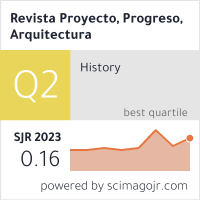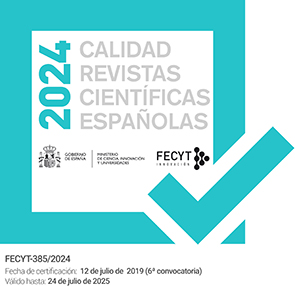JOZE PLECNIK Y LA WAGNERSCHULE. APRENDICES Y ARQUITECTOS EN LA FORMACIÓN DE LA MODERNIDAD / Jože Plečnik and the Wagnerschule. Apprentices and architects in the formation of modernity
DOI:
https://doi.org/10.12795/ppa.2010.i1.01Palavras-chave:
Otto Wagner, Jože Plečnik, Wagnerschule, Vienna, LjubljanaResumo
RESUMEN Durante veinte años (1894–1914) las aulas vienesas de la Wagnerschule albergaron un microcosmos de aspirantes a arquitectos procedentes de todas las regiones del Imperio Austrohúngaro. Seleccionados por sus notables dotes para el dibujo, unos ciento sesenta arquitectos se formaron bajo la supervisión de Otto Wagner. Colaboradores en su estudio o en los de otros arquitectos vieneses, participaron como aprendices de una de las transformaciones urbanas más radicales de la época. Estimulados en su espíritu crítico por el exigente Wagner, le acompañaron en su tránsito teórico desde la certidumbre del historicismo hasta el abismo de la primera Modernidad. Por su dominio del medio gráfico, su capacidad productiva y la novedad de sus propuestas, y por la colaboración con los medios editoriales más modernos y difundidos, la Wagnerschule se convirtió en uno de los focos de modernidad arquitectónica de mayor proyección internacional. La caída del Imperio dio lugar a la diáspora de sus miembros por las nuevas naciones resultantes, y a la aparición de nuevos focos culturales. Los antiguos discípulos pasaban a convertirse en maestros. Entre ellos el esloveno Jože Plečnik, profesor durante más de cuarenta años, en Praga y en Ljubljana, ciudad en la que llevó a cabo, con la colaboración de sus alumnos, una profunda transformación urbana estrechamente ligada a su labor docente. Hasta su muerte en 1957, Plečnik desarrolló el método crítico y propositivo de la Wagnerschule, sosteniendo con convicción la importancia del dibujo y del conocimiento de la arquitectura clásica.
SUMMARY For twenty years (1894–1914) the Viennese classrooms of the Wagnerschule housed a microcosm of architect hopefuls from all the regions of the Austro–Hungarian Empire. Selected for their remarkable gifts for drawing, about one hundred and sixty architects trained under the supervision of Otto Wagner. Collaborators in his studio, or those of other Viennese architects, participated as apprentices to one of the most radical urban transformations of the time. With their critical spirit stimulated by the demanding Wagner, they accompanied him in his theoretical transition from the certainty of historicism, to the abyss of the first Modernity. Through its mastery of the graphic medium, its productive capacity and the innovation of its proposals, and through collaboration with the most modern and widespread editorial media, the Wagnerschule became one of the centres of architectural modernity of great international renown. The fall of the Empire gave rise to the diaspora of its members to the resulting new nations, and to the appearance of new cultural foci. The old disciples became teachers. Among these was the Slovene, Jože Plečnik, a Professor for more than forty years in Prague and Ljubljana. Ljubljana, a city in which a profound urban transformation was carried out, with the collaboration of his students, and which was closely bound to his educational work. Until his death in 1957, Plečnik developed the critical and propositional method of the Wagnerschule, maintaining the importance of drawing and the knowledge of classical architecture with conviction.
Downloads
Referências
Architektur Zentrum Wien: Arquitectura en Austria. Una visión del siglo XX. Catálogo de la exposición organizada por la Junta de Andalucía y el Ministerio de Fomento. Barcelona: Actar, 1998.
Boesiger, Willy; Girsberger, Hans: Le Corbusier 1910–65. 7ª ed. Barcelona: Gustavo Gili, 2001.
Borsi, Franco; Godoli, Ezio: Wiener Bauten der Jahrhundertwende. Hamburgo: Nikol Verlag, 1985.
Graf, Otto Antonia: Die vergessene Wagnerschule. Viena: Museum des 20. Jahrhunderts und Verlag für Jugend & Volk, 1969.
Hrausky, Andrej; Koželj, Janez: Architectural Guide to Ljubljana. Ljubljana: Rokus gifts, 2007.
Krečič, Peter: Plečnik: The complete works. London: Academy Editions, 1993.
Mang, Karl; Mang, Eva (Eds.): Viennese Architecture in drawings, 1860–1930. Londres: Academy Editions, 1979.
Pozzetto, Marco: La Scuola di Wagner, 1894–1912. Idee, premi, concorsi. Catálogo de la exposición organizada por el Istituto di architettura e urbanistica de la Universidad de Trieste y por el Civico museo Revoltella di Trieste. Trieste: Comune di Trieste, 1979.
Prelovšek, Damjan: Jože Plečnik 1872–1957. Milán: Electa, 2005.
Sarnitz, August et al.: Architecture in Vienna. Viena: Springer Verlag, 1998.
Sarnitz, August: Otto Wagner. Colonia: Taschen, 2005.
Schorske, Carl E.: Viena Fin–de–Siècle. Barcelona: Gustavo Gili, 1982.
Wagner, Otto: Einige Skizzen, Projekte und ausgeführte Bauwerke. Viena: s.e., 1890 (vol. 1), 1897 (vol. 2), 1906 (vol. 3), 1922 (vol. 4). Compilación y traducción al inglés: Sketches, projects and executed buildings. Londres: London Architectural Press, 1987.
Wagner, Otto: Moderne Architektur. Seinen Schülern ein Führer auf diesem Kunstgebiete. Viena: Anton Schroll, 1896 (1ª ed.), 1899 (2ª ed.), 1902 (3ª ed.).
Wagner, Otto: Die Baukunst unserer Zeit. (4ª ed. de Moderne Architektur). Viena: Anton Schroll, 1914. Traducción al español: La arquitectura de nuestro tiempo. Madrid: El Croquis Editorial, 1993.
Downloads
Publicado
Como Citar
Edição
Seção
Licença
Las ediciones impresa y electrónica de esta Revista son editadas por el Secretariado de Publicaciones de la Universidad de Sevilla, siendo necesario citar la procedencia en cualquier reproducción parcial o total.
Salvo indicación contraria, todos los contenidos de la edición electrónica se distribuyen bajo una licencia de uso y distribución “Creative Commons Atribución-NoComercial-SinDerivar 4.0 Internacional” ![]() . Puede consultar desde aquí la versión informativa y el texto legal de la licencia. Esta circunstancia ha de hacerse constar expresamente de esta forma cuando sea necesario.
. Puede consultar desde aquí la versión informativa y el texto legal de la licencia. Esta circunstancia ha de hacerse constar expresamente de esta forma cuando sea necesario.
Los autores/as que publiquen en esta revista aceptan las siguientes condiciones:
- Los autores/as conservan los derechos de autor y ceden a la revista el derecho de la primera publicación, con el trabajo registrado con la licencia de atribución de Creative Commons, que permite a terceros utilizar lo publicado siempre que mencionen la autoría del trabajo y a la primera publicación en esta revista.
- Los autores/as pueden realizar otros acuerdos contractuales independientes y adicionales para la distribución no exclusiva de la versión del artículo publicado en esta revista (p. ej., incluirlo en un repositorio institucional o publicarlo en un libro) siempre que indiquen claramente que el trabajo se publicó por primera vez en esta revista.
- Se permite y recomienda a los autores/as a publicar su trabajo en Internet (por ejemplo en páginas institucionales o personales) antes y durante el proceso de revisión y publicación, ya que puede conducir a intercambios productivos y a una mayor y más rápida difusión del trabajo publicado (vea The Effect of Open Access).









